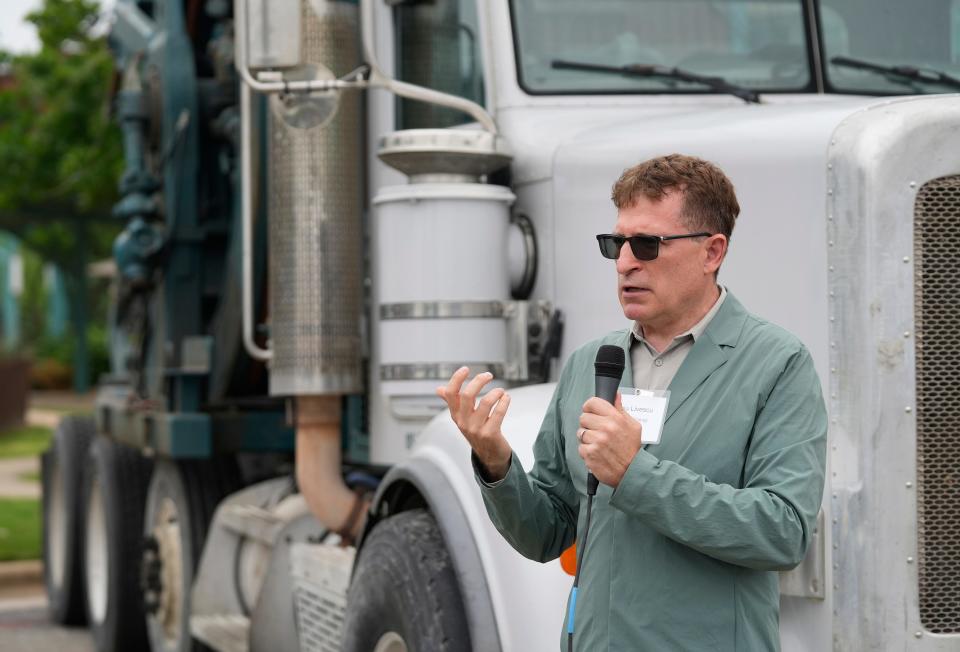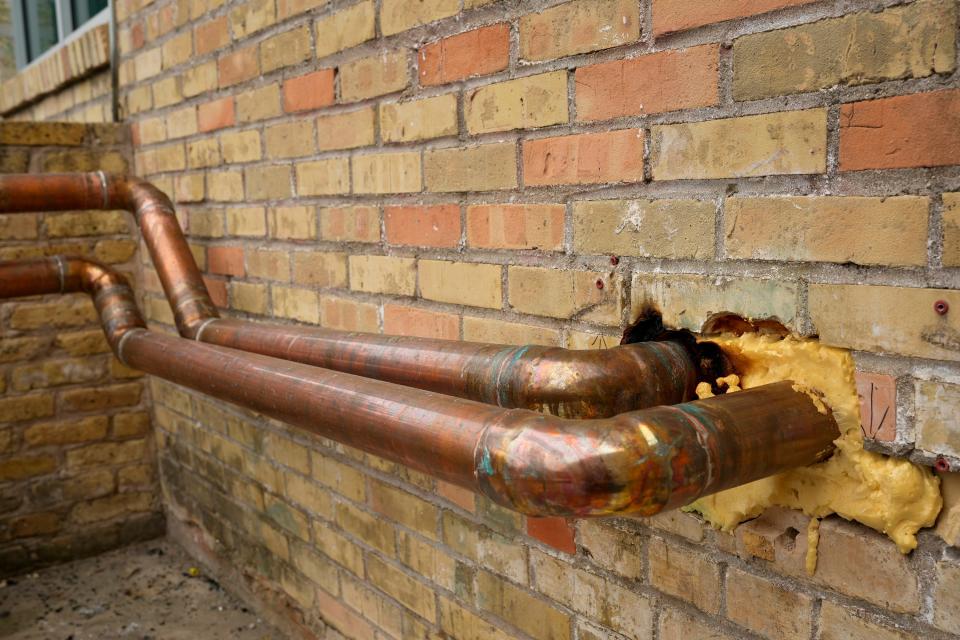Geothermal heating-air conditioning? Why a startup is first urban project in South Austin
An Austin startup has redeployed the technology used to extract oil and gas from tens of thousands of feet below the surface to capture geothermal energy a few hundred feet below the parking of a World War I-era airfield that will heat and cool an office building while leaving only a tiny carbon footprint.
The startup, called Bedrock Energy, unveiled what it is touting as Austin's first geothermal project in an urban setting in the Penn Field business park along South Congress Avenue just north of Texas 71.
"Drilling in a parking lot in an urban environment without affecting the noise levels for the tenants in the building is remarkable," Bedrock co-founder and chief technology officer Silviu Livescu told the American-Statesman as he stood in front of a Peterbilt truck with the drilling unit in the back.

Bedrock was started 20 months ago by Livescu, who's also a former engineering professor at the University of Texas, and company CEO Joselyn Lai. The Penn Field project is the company's first, and the announcement Wednesday attracted community leaders along with a representative of the U.S. Department of Energy and an executive from Joint Base San Antonio, the U.S. Defense Department's premier installation.
More: Can we count on renewable energy? Four ways wind, solar and water can power the US
To cool and heat the modernized building on the former airbase constructed in 1918, Bedrock drilled 11 holes for pipes that would form a manifold connected to the structure. Water is then pumped in and is kept about 75 degrees Fahrenheit, which is the constant temperature at 800 feet below the surface year round.
The 75-degree water circulates through the building, which keeps the temperature constant, and pumps replace the building's cold in the winter with the warmer air from below ground. The same principle is employed to exchange the hot summer air with the ground-cooled air.

The upfront installation of the geothermal HVAC system cost is about $10,000 per 500 square feet of space. The low operating cost should offset the initial investment, Lai said.
The Energy Department last month released a report on what it called "the potential of next-generation geothermal power to transform the U.S. energy landscape" and said the U.S. is on pace to boost its geothermal generation 20-fold over the next 25 years.
"Next-generation geothermal energy represents a significant advancement in harnessing the Earth’s heat to generate power," the report said. "This innovative approach involves the use of nascent technologies and methods to access and convert geothermal resources into electricity more efficiently and sustainably than ever before."

Geothermal energy is also becoming an increasingly vital component of the military's power-generation portfolio. On Tuesday, the U.S. Defense Department's Defense Innovation Unit announced it was doubling the number of technology companies it will use to deliver geothermal energy.
More: Can Texas keep the lights on with renewable electric power alone? Here's what experts say.
"Threats from wildfires, extreme weather, cybersecurity attacks are increasing, and geothermal energy is an ideal solution to support DoD missions and communities with power," the unit said in a news release.
In September, the Defense Department announced plans for additional geothermal projects at installations in Texas, California and Nevada. One of them, Joint Base San Antonio, began its project in November.
"As the largest joint base in the Department of Defense, we must continue to think ahead and look for opportunities to implement diverse, resilient energy sources that reduce emissions, enhance security and allow us to operate sustainably for years to come," Air Force Brig. Gen. Russell D. Driggers, the base's commander, said in the news release announcing the new plant.
This article originally appeared on Austin American-Statesman: Penn Field building refitted with Bedrock Energy geothermal HVAC

